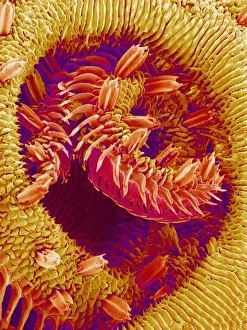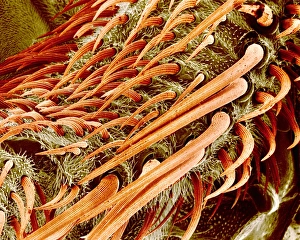Sense Organ Collection
Exploring the microscopic world of sense organs, let's dive into the fascinating realm of biological detection systems
All Professionally Made to Order for Quick Shipping
Exploring the microscopic world of sense organs, let's dive into the fascinating realm of biological detection systems. From the wavy, undulating surface of a Moon jellyfish's rhopalium, where touch receptors reside, to the intricate proboscis of a butterfly, designed for sipping nectar. The SEM (Scanning Electron Microscope) reveals their complex structures, such as the grooves and papillae on the butterfly's proboscis, which enable it to taste and smell. Moving on, the bee's head reveals a myriad of sensory hairs, each one playing a crucial role in the bee's ability to navigate and communicate through the waggle dance. The fly's hairs, too, are essential for its sense of touch and taste. As we delve deeper, the foetal sense organ, captured in SEM images, reveals a developing organ of Corti, which will eventually become the inner ear and enable the sense of hearing. Another SEM image showcases the developing olfactory bulb, the primary site for processing olfactory information in the brain. Lastly, the dogfish head, transversely sectioned, reveals the complex labyrinth of the inner ear, where the vestibular system allows for balance and spatial orientation. The sense organs' intricate structures, revealed through SEM, highlight the beauty and complexity of nature's design.



